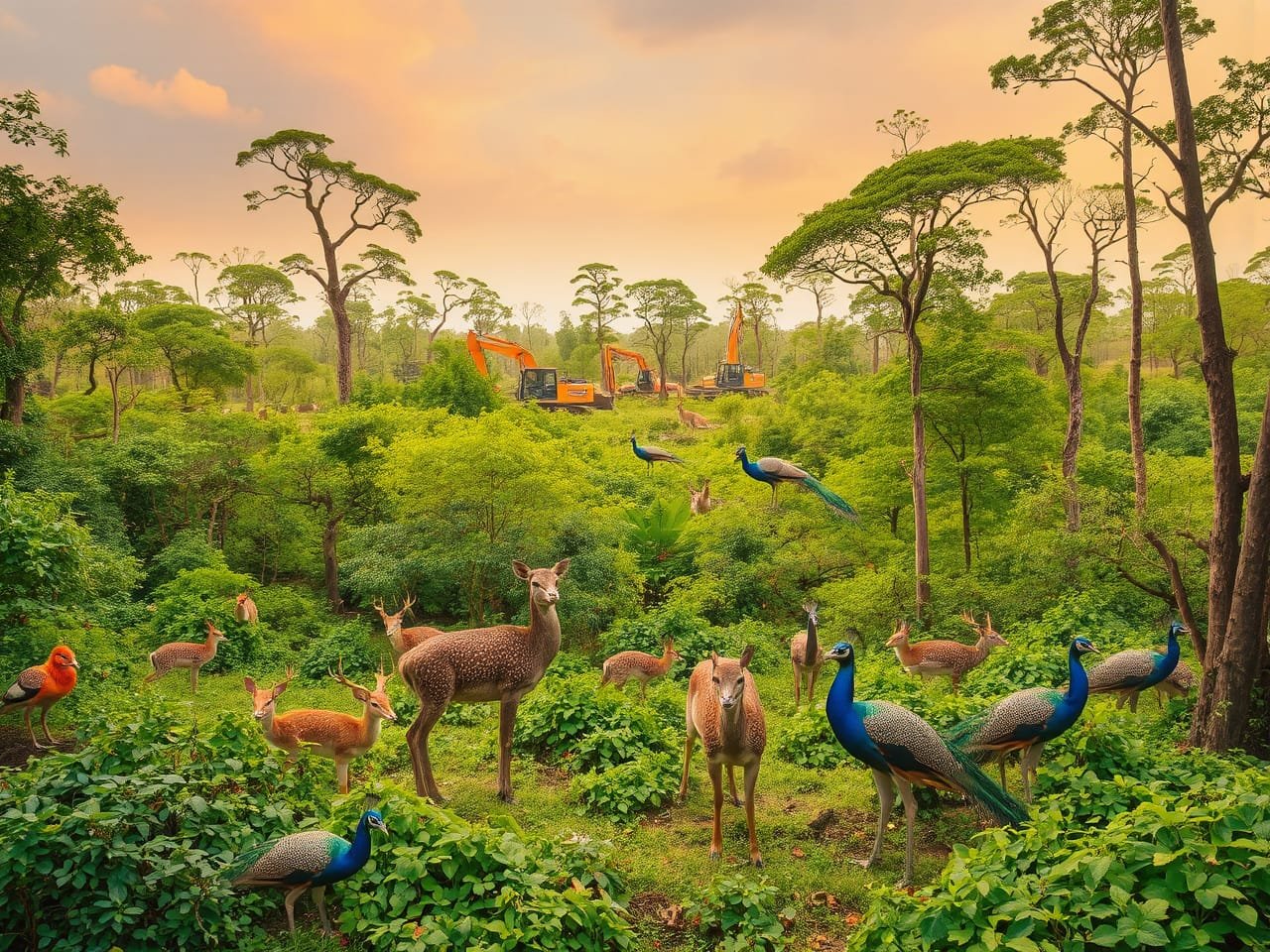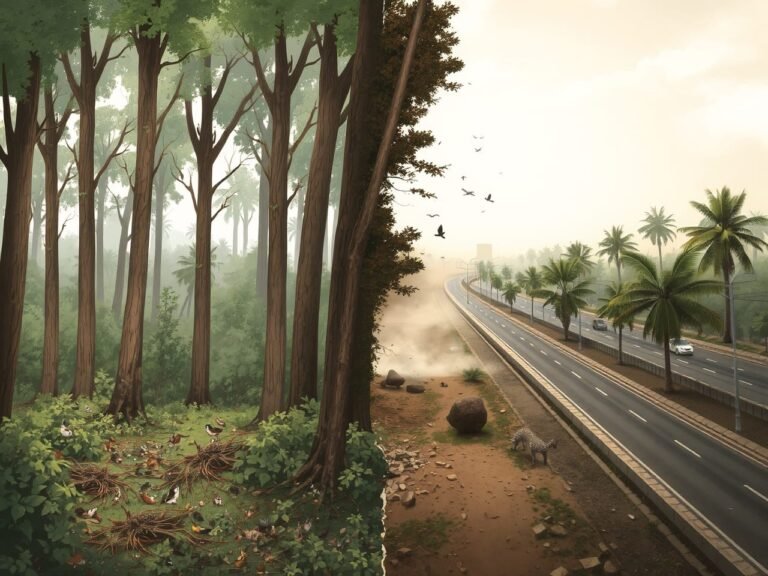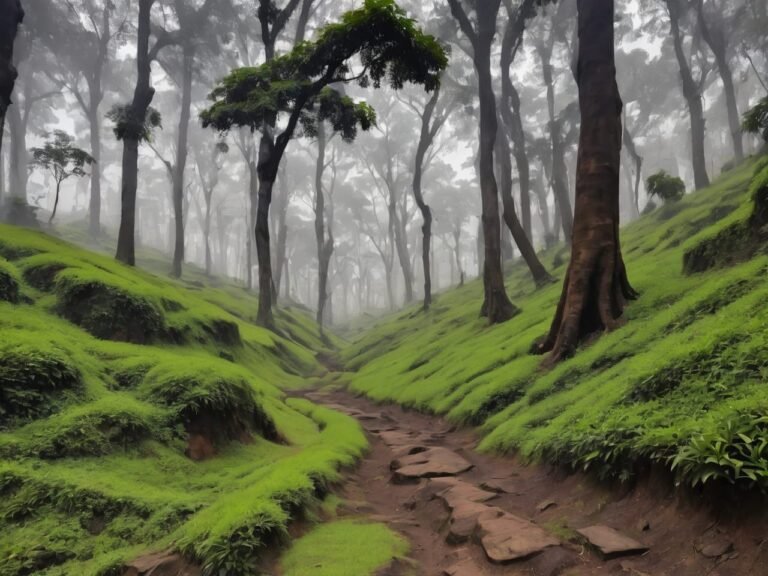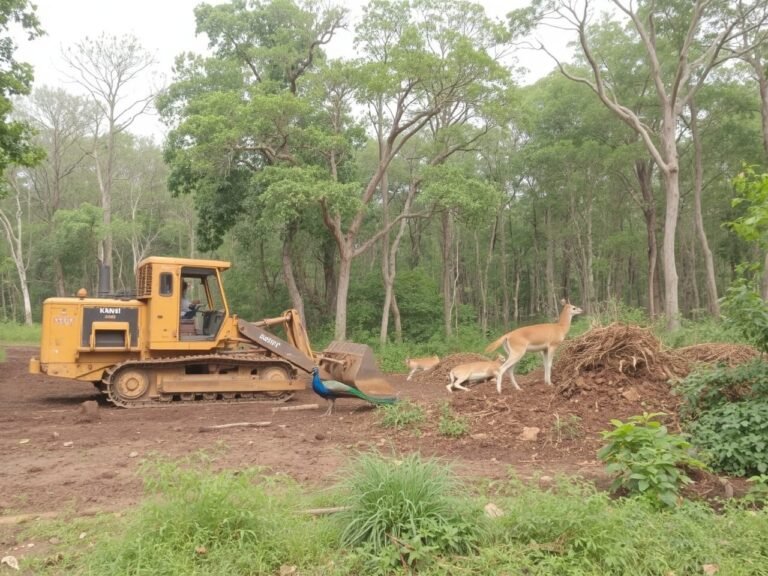Hyderabad’s Green Treasure Under Threat
Nestled within Hyderabad, the 400-acre Kancha Gachibowli forest, a pristine green oasis, is now at risk of being razed for urban development. A recent ecological report by researcher Arun Vasireddy highlights the devastating consequences this deforestation could have on biodiversity, climate, and the local ecosystem.
A Haven for Wildlife and Flora
The Kancha Gachibowli forest is home to 233 species of birds, surpassing the biodiversity of the famous KBR National Park (150 species). This unique green space provides refuge to Hyderabad’s state bird, the Indian Roller, and endangered species like the Hyderabad tree trunk spider (Murricia hyderabadensis)—a creature found nowhere else in the world.
This dense forest also nurtures over 72 species of trees, including the culturally significant Marking Nut (Semecarpus anacardium), locally known as Chaakali Jeedi. Historically used by washermen, this tree holds both ecological and cultural importance.
Environmental Impact of Deforestation
The loss of this forest could raise local temperatures by 1 to 4 degrees Celsius, further exacerbating Hyderabad’s already rising heat levels. The interconnected ecosystem of lakes, hillocks, and woodlands will be disrupted, affecting the delicate balance of water conservation, air purification, and soil stabilization. Moreover, conservationists argue that maintaining such forests costs nothing, whereas recreating similar biodiversity would require billions of rupees.
Legal Battle and Government’s Role
The Telangana High Court has temporarily halted tree felling in the area, but the forest’s future remains uncertain. The Telangana Industrial Infrastructure Corporation (TGIIC) and other governmental bodies have yet to respond with concrete conservation measures.
Forest officials state that wildlife protection in the region is the responsibility of the landowners, meaning any relocation of species like the chital (spotted deer), peacock, and star tortoise (a protected Schedule I species under the Wildlife Protection Act) must be funded privately. As of April 2, 2025, no such request has been made to the Forest Department.
Why This Fight Matters
Hyderabad is already experiencing rapid urbanization at the cost of its natural heritage. Losing Kancha Gachibowli forest would mean losing a self-sustaining ecosystem that provides clean air, water retention, and an irreplaceable habitat for wildlife. If this destruction continues, Hyderabad could face severe ecological consequences, including increased pollution, declining air quality, and loss of rare species.
Call to Action
Preserving the Kancha Gachibowli forest is not just about saving trees—it’s about protecting Hyderabad’s future. Environmentalists, citizens, and legal experts must come together to demand permanent conservation measures. The authorities should be urged to explore sustainable development alternatives that do not involve erasing an entire forest.
Sources & Further Reading:
India Today – Kancha Gachibowli Ecological Report
Deccan Chronicle – Wildlife Protection Responsibility
Siasat Daily – University of Hyderabad Land Row
The fight to protect Kancha Gachibowli is ongoing—will you be part of it?








